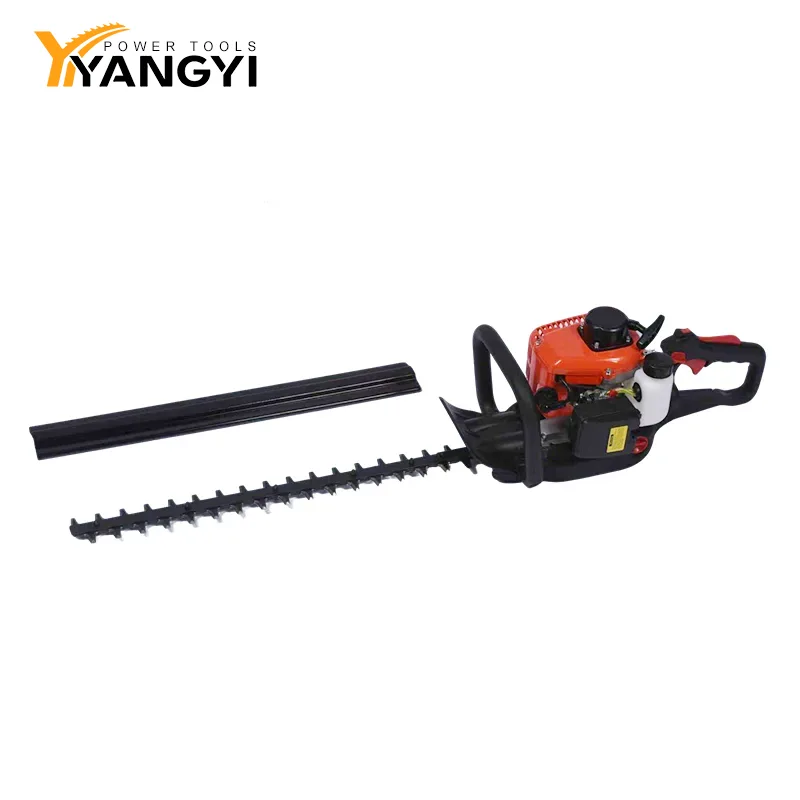How to Maintain Gasoline-Powered Tools?
2025-08-27
Gasoline-powered tools are renowned for their power and portability, making them indispensable for both professionals and homeowners. However, to ensure these tools deliver peak performance and a long service life, consistent and proper maintenance is non-negotiable. Neglecting this can lead to frustrating start-ups, reduced power, and premature breakdowns. This guide, drawing on decades of engineering expertise, will walk you through the essential steps to keep your equipment running like new.
Understanding Your Gasoline Tools
Before diving into maintenance, it's crucial to understand the core components of your Gasoline Tools. These machines are powered by internal combustion engines, which require a precise mix of fuel, air, and a spark to operate. The main system includes the fuel system, air filtration system, ignition system, and mechanical components. Each part demands specific attention. Our factory designs its Gasoline Tools with user maintenance in mind, ensuring easy access to key components like the air filter and spark plug.
Essential Maintenance Checklist
A systematic approach to maintenance is the most effective. Follow this checklist to protect your investment.
Daily or Pre-Use Checks
1. Fuel Inspection: Always use fresh, high-octane gasoline mixed with the correct ratio of high-quality two-stroke oil. Stale fuel is a primary cause of starting and performance issues.
2. Air Filter Inspection: Check the air filter before each use. A clogged filter restricts airflow, causing the engine to run rich and lose power.
3. External Cleaning: Wipe down the tool to remove dirt, debris, and sawdust. This prevents contaminants from entering critical components.
4. Inspect for Damage: Look for any obvious signs of wear, loose bolts, or damage to the body and cutting attachments.
Regular Maintenance Schedule
Perform these tasks based on your usage frequency, typically every 20-50 operating hours.
| Component | Maintenance Task | Recommended Interval | Yangyi Pro Tip |
| Air Filter | Clean with soapy water or replace. | Every 25 hours | Never operate the tool with a dirty or damaged filter. |
| Spark Plug | Remove, clean, check gap, and replace if worn. | Every 30 hours | A fouled spark plug is a common reason an engine won't start. |
| Fuel Filter | Replace the in-tank fuel filter. | Every 50 hours | Prevents debris from entering the carburetor. |
| Cutting Attachment | Sharpen blades or replace worn chains/lines. | As needed | A sharp blade reduces strain on the engine. |
| Cooling Fins | Clean debris from engine cooling fins. | Every 25 hours | Prevents dangerous engine overheating. |
| Carburetor | Inspect and clean; may require professional service. | Annually or as needed | Use fuel stabilizer to keep the carburetor clean. |
FAQ: Your Maintenance Questions Answered
Q1: What is the single most important tip for maintaining my gasoline-powered tool?
A: The most critical practice is always using the correct, fresh fuel-oil mixture. Old fuel separates and degrades, forming gums and varnishes that clog the carburetor jets and fuel filter. This leads to hard starting, stalling, and poor performance. For best results, mix only the amount of fuel you will use within a month and consider adding a fuel stabilizer for longer storage periods.
Q2: My tool won't start even though I've just refueled it. What should I check first?
A: Begin with the simplest solutions first. First, ensure the on/off switch is engaged and the choke is in the correct position. Next, inspect the spark plug. Remove it, clean off any heavy carbon deposits, check that the electrode gap is to specification, and ensure it is producing a strong blue spark. If the plug is wet with fuel, it may be flooded; let it dry out before attempting to start again. Finally, check that the air filter is not completely blocked.
Long-Term Storage Procedures
Proper preparation for storage is vital. If you plan to store your Gasoline Tools for more than 30 days, follow these steps to avoid costly repairs later.
-
Drain the Fuel Tank: Run the engine until it stops to use up all fuel in the carburetor, or use a siphon to remove all fuel from the tank.
-
Add Stabilizer (if fuel remains): If you cannot drain all fuel, add a stabilizer to the tank and run the engine for 5 minutes to circulate it.
-
Remove Spark Plug: Pour a teaspoon of engine oil into the cylinder and pull the starter cord slowly to distribute the oil. Reinstall the spark plug.
-
Clean Thoroughly: Deep clean the entire tool, removing all dirt and debris.
-
Store Properly: Keep the tool in a clean, dry, and secure place.
By dedicating a small amount of time to regular maintenance, you significantly extend the life and reliability of your Gasoline Tools. Our commitment at Yangyi is to provide durable and high-performance equipment, and proper care ensures you get the maximum value from your purchase.
For professional-grade, easy-to-maintain Gasoline Tools that are built to last, explore the robust lineup from Yangyi. Trusted by professionals worldwide, our tools are engineered for performance and durability. Ready to experience the difference of a well-maintained tool? Contact Ningbo Yangyi Import & Export Co., Ltd. today to find the perfect gasoline-powered equipment for your needs.



